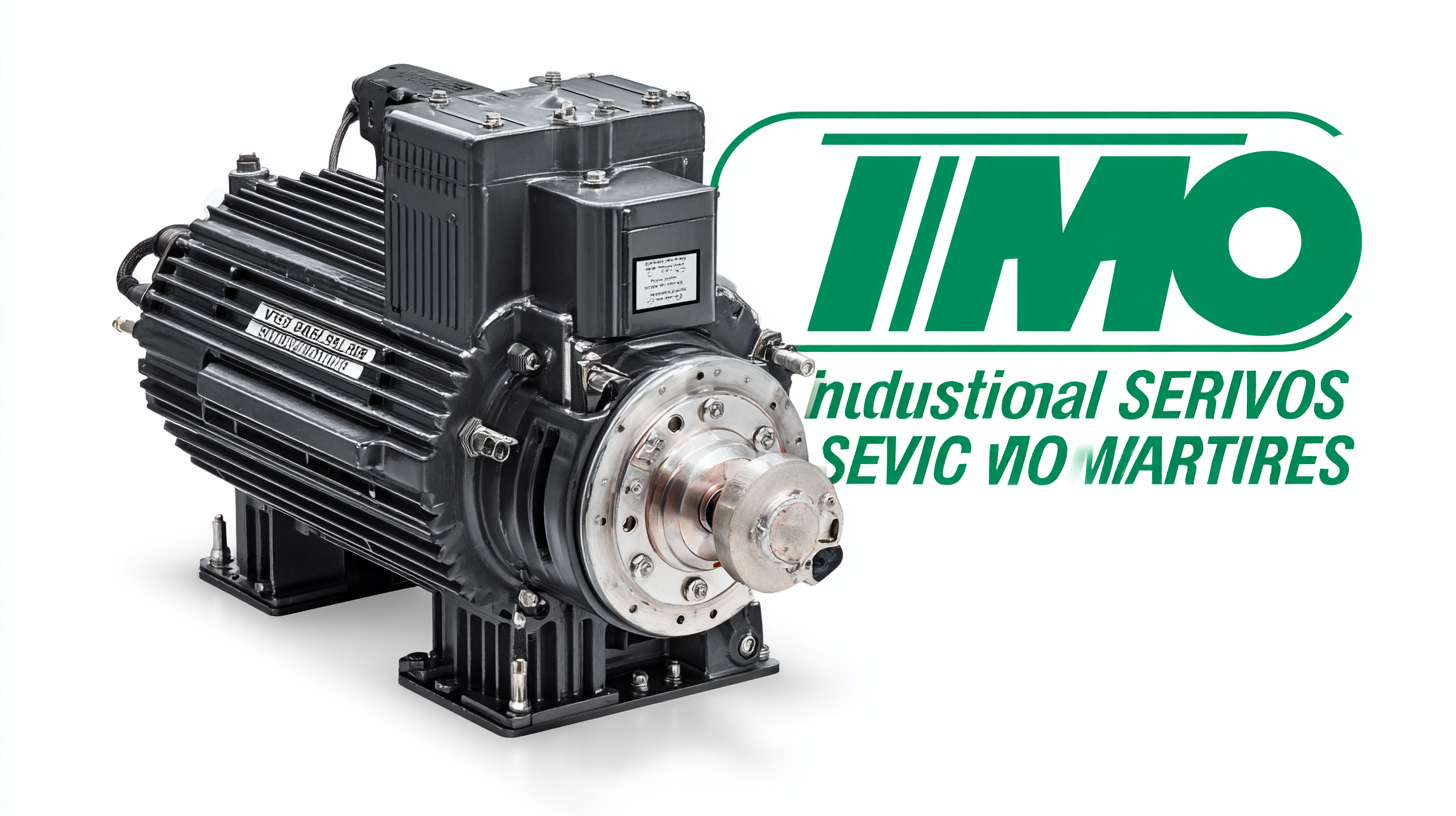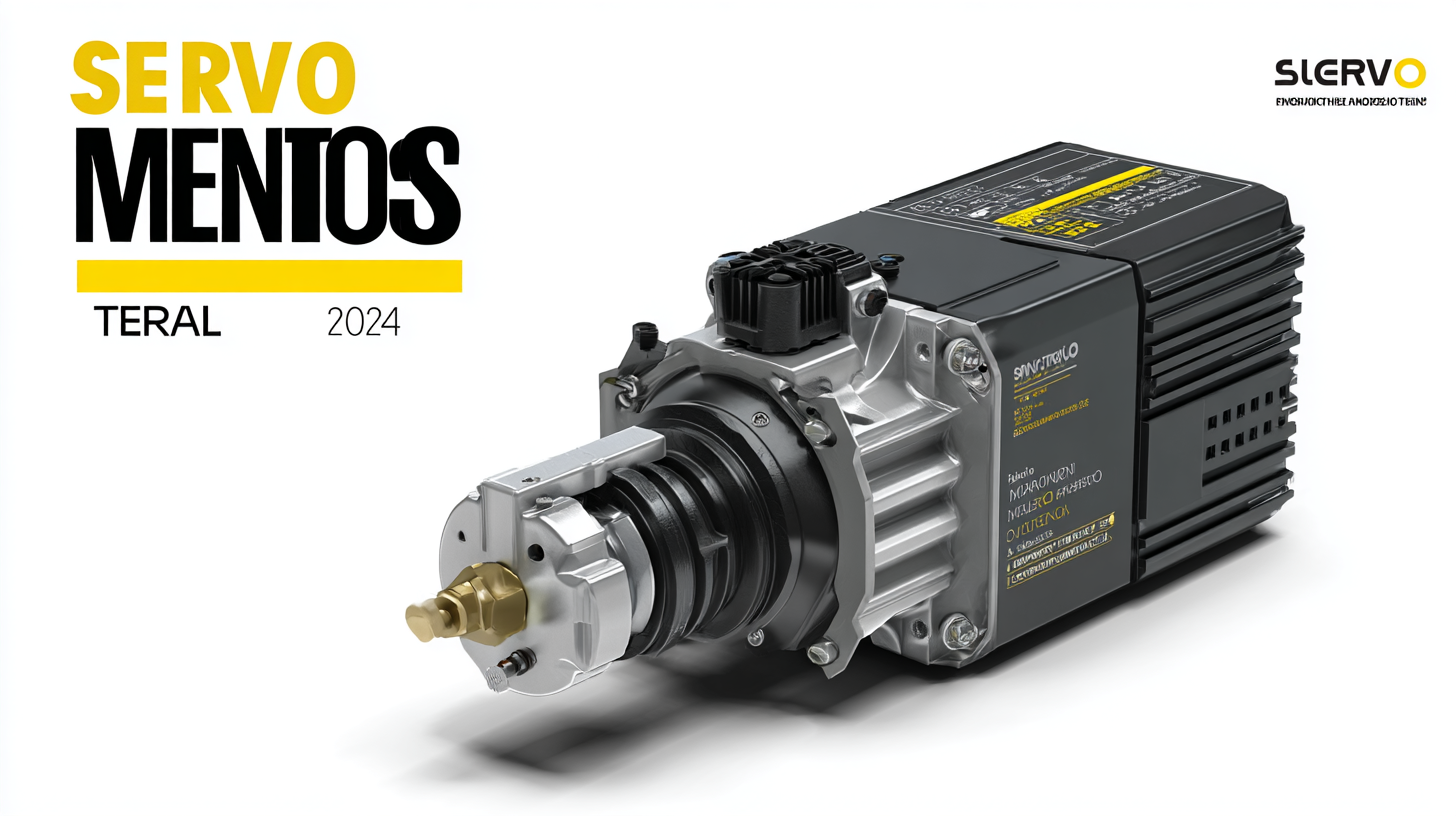
-
Home
-
Products
-
Application
-
Documents
-
News
-
Blog
-
Blog
-
Sinsegye
Leave Your Message
-
Wechat OA

-
 Baijia Hao
Baijia Hao



 Baijia Hao
Baijia Hao

The industrial landscape is undergoing a significant transformation, driven by advancements in automation and precision engineering. By 2025, the Industrial Servo Motors market is poised to experience substantial growth, projected to reach approximately $11.65 billion, according to recent industry reports. This surge is largely attributed to the increasing demand for high-performance motion control systems across various sectors such as manufacturing, aerospace, and robotics. As industries seek to enhance efficiency and reduce downtime, the adoption of Industrial Servo Motors is becoming increasingly crucial. Furthermore, the integration of Industry 4.0 technologies is expected to propel innovations in servo motor designs, leading to improved energy efficiency and operational capabilities. In this blog, we will explore the future trends shaping the Industrial Servo Motors market, providing a comprehensive checklist of factors to consider for businesses looking to stay at the forefront of this dynamic field.

Industrial servo motors play a crucial role in enhancing automation processes across various industries, including manufacturing, robotics, and aerospace. These motors are characterized by their high efficiency, precision, and reliability, making them essential for applications that demand consistent performance.
According to a report by MarketsandMarkets, the global industrial servo motors market is expected to reach $9.3 billion by 2025, growing at a CAGR of 6.5% from 2020. This growth can be attributed to the increasing adoption of advanced manufacturing technologies and the rising need for automation in production lines.

The significance of industrial servo motors extends beyond mere functionality; they are integral in optimizing energy consumption and ensuring product quality. As industries aim for greener practices, servo motors offer an energy-efficient solution compared to conventional motors, with efficiency ratings often exceeding 90%. Additionally, their ability to provide precise control over speed and torque contributes to reduced material waste and higher overall efficiency in production processes. Such attributes highlight why many organizations are increasingly investing in servo motor technology to maintain a competitive edge in a rapidly evolving industrial landscape.
In the landscape of industrial automation, understanding the different types of servo motors and their unique features is crucial for optimizing performance and efficiency. The main classifications of servo motors are AC and DC motors, each offering distinct advantages. AC motors are known for their high speed and torque, making them ideal for applications requiring consistent power delivery. DC motors, on the other hand, are often favored for their precise control and simplicity, which can be beneficial in applications where careful maneuvering is essential.
When selecting the right servo motor for your automation needs, it's vital to consider the voltage requirements: low, medium, or high. Low voltage motors tend to be easier to manage and are often used in applications where lower power input is sufficient. Medium and high voltage motors are typically applied in more demanding environments, such as heavy machinery and automotive manufacturing, where higher power output is necessary.
**Tips:** Always assess the specific requirements of your automation processes to determine the ideal motor type. Moreover, consider the compatibility of the motor with existing control systems, ensuring seamless integration. Regular maintenance and monitoring can also extend the lifespan of your servo motors, maximizing your investment.
As we look toward 2025, the applications of different types of servo motors across various industries are set to evolve significantly. AC and DC servo motors are fundamental in sectors such as automotive, robotics, and industrial automation. According to the Integrated Servo Motor Market analysis, the market is witnessing a diversified application landscape, particularly driven by the surge in demand for automation solutions. This growth is evidenced by the expected increase in the MEA variable frequency drive market, projected to reach USD 1.29 billion by 2030, with a compound annual growth rate (CAGR) of 5.6% during the period from 2025 to 2030.
The precision offered by servo motors makes them particularly attractive for applications in motion control and robotics. For instance, the stepper motor industry is anticipated to grow from USD 4.13 billion in 2025 to USD 5.99 billion by 2034, illustrating a robust CAGR of 4.22%. This surge reflects the increasing need for high-performance systems that require accuracy and reliability. Additionally, advancements in motor control technology, such as the introduction of compact multi-axis servo motor controllers, are paving the way for more sophisticated motion control strategies in industrial applications, significantly enhancing production technologies across sectors.
The industrial servo motors market is poised for transformative changes by 2025, driven by innovative trends and technologies that redefine efficiency and performance. With the integration of smart technology and IoT capabilities, future servo motors will not only enhance automation processes but also enable predictive maintenance. This shift is crucial for minimizing downtime and optimizing operational efficiency, paving the way for industries to enhance productivity while reducing costs.
Tips for businesses looking to invest in new servo motor technologies include evaluating their specific automation needs and considering the adaptability of these systems. Investing in motors that offer communication protocols compatible with existing infrastructure can significantly ease the transition. Furthermore, focusing on energy-efficient models can reduce operational costs and contribute to sustainability efforts within the industry.
Another emerging trend is the development of compact and lightweight servo motors, which promote easier installation and greater versatility. As manufacturing environments continue to evolve, these motors can facilitate agile production processes, allowing for rapid product changes without extensive reconfiguration. Companies should keep abreast of these advancements to ensure they remain competitive in a rapidly evolving marketplace.

The industrial servo motors market is poised for significant growth as we approach 2025, driven by advancements in automation and robotics across various sectors. According to a recent report from Market Research Future, the global market for servo motors is expected to reach USD 8.4 billion by 2025, growing at a CAGR of 5.2% from 2020. This surge can be attributed to the increasing demand for energy-efficient and precise motion control solutions in manufacturing processes.
In particular, industries such as automotive, electronics, and pharmaceuticals are rapidly integrating servo motor technology to enhance operational efficiency and reduce downtime. A study by Allied Market Research highlights that the automotive sector alone is expected to contribute significantly, accounting for approximately 30% of the market share by 2025. Furthermore, the rise of Industry 4.0 initiatives is creating substantial growth opportunities, as companies seek to implement smart factories equipped with advanced robotics and automation technologies that rely heavily on sophisticated servo systems. This trend underscores the crucial role servo motors will play in driving future industrial innovations.
This chart illustrates the projected market size of industrial servo motors from 2019 to 2025, indicating significant growth opportunities in this sector, with the market expected to reach approximately 9.0 billion USD by 2025.